Moringa Nutrition Facts
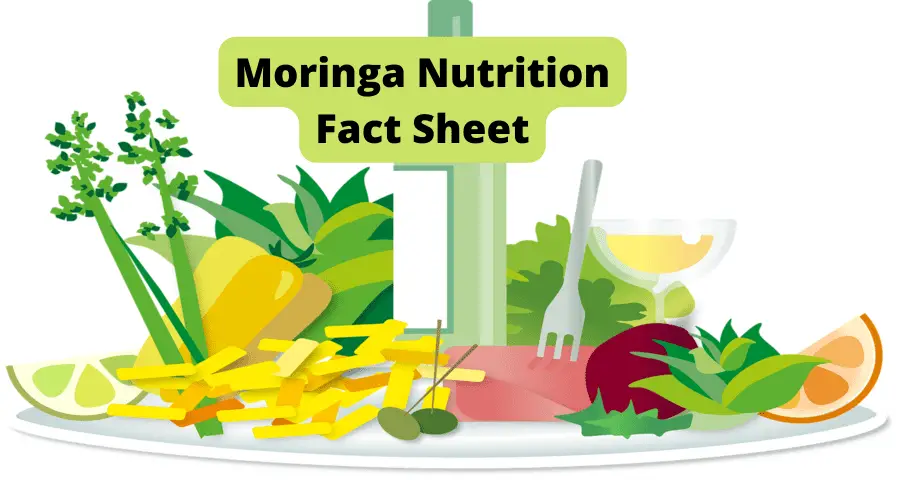
Dive into the Green Goodness: Moringa’s Nutritional Factsheet Unpacked!
Historically, nutrition has always been a bit of a challenge for us as a society. Blame it on the easy availability of cheap, not-so-healthy foods, economic disparities, lack of education, or just personal preferences. That’s why many people are turning to superfoods like Moringa. In this Moringa nutrition factsheet, we’ll explore whether it lives up to the hype. According to a 2015 report by the Office of Disease Prevention and Health Promotion, a whopping 87% of Americans eat fewer veggies than they should, and 75% fall short on the fruit front. That’s not a great recipe for avoiding heart disease or high blood pressure. Consequently, this explains the widespread popularity of “superfoods” such as Moringa and all its nutrients, attracting even those who may not consider themselves health enthusiasts. In this article, we’re going to be breaking down the nutritional facts of Moringa in a 10 gram serving (the most commonly recommended daily serving size) and the positive impact it will bring to your body. To learn more about the nutritional benefits of 1 teaspoon of Moringa powder, check out the article below:Moringa Nutrition Facts
A 10-gram serving of Moringa leaf powder (the industry standard of daily consumption) has:- Calories: 28.70.
- Protein: 2.74 grams.
- Fat: 0.29 grams.
- Carbohydrates: 3.81 grams.
- Fiber: 2.44 grams.
- Vitamin B1: 0.17 milligrams.
- Vitamin C: 2.02 milligrams.
- Vitamin E: 9.70 milligrams.
- Calcium: 182.77 milligrams.
- Magnesium: 29.60 milligrams.
- Potassium: 145.80 milligrams.
- Iron: 3.11 milligrams.
Moringa Nutrition Value In A Chart
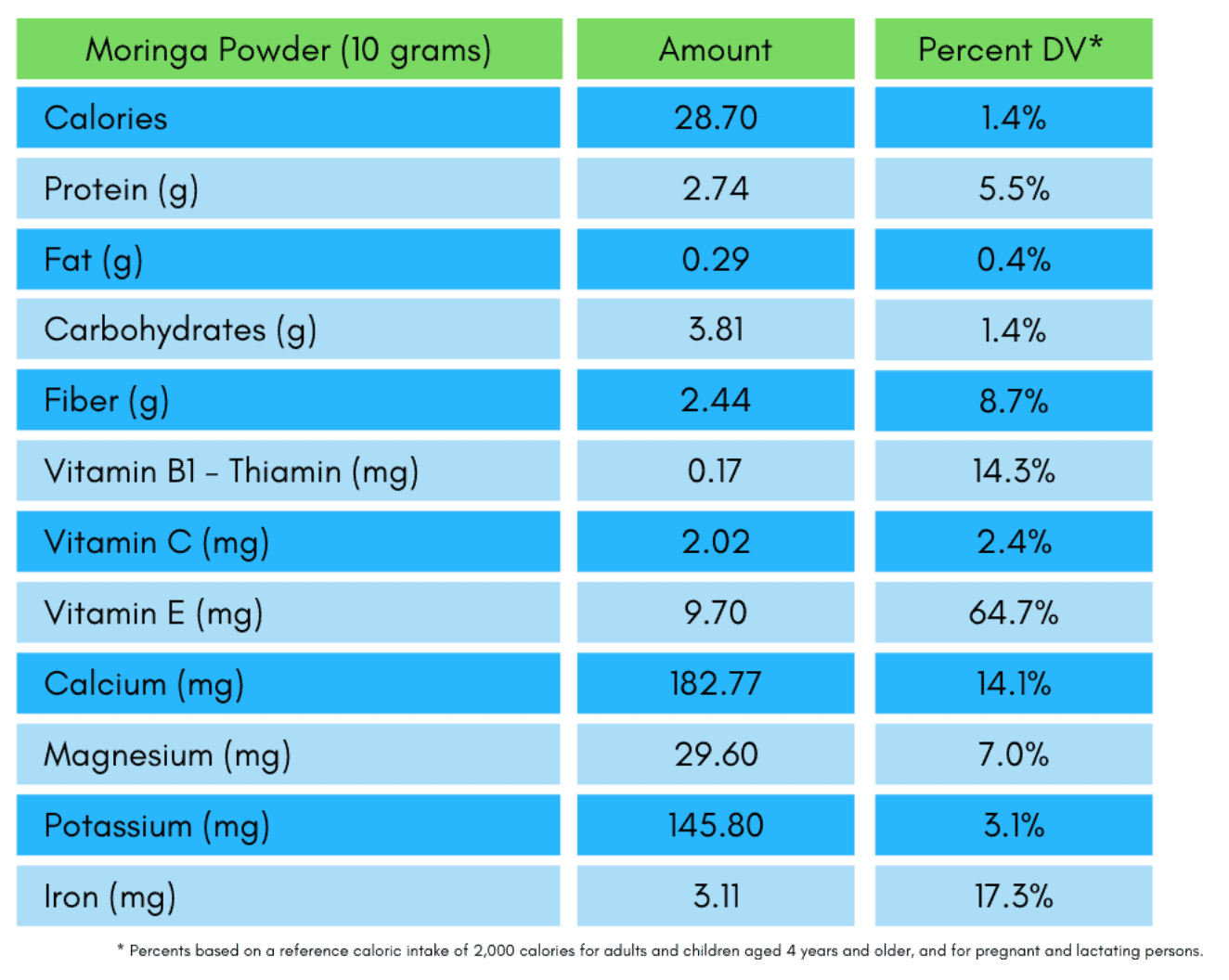 If food is nutrient-rich enough, after all, won’t it offset some of the more unhealthy food choices we make?
Unfortunately, nutrition isn’t that simple: there is no such thing as a single food that’s going to simultaneously solve your every health problem while also giving you free rein to eat all the fried ice cream you want.
If there were, I would have discovered it by now, and would constantly be eating fried ice cream!
Nevertheless, slow changes to your diet can help, and Moringa leaf powder is full of vitamins, minerals, and antioxidants (including heavyweights like Calcium, Iron, and Vitamin E) that even small amounts can potentially help.
Remember to stay away from the Moringa pods and Moringa root unless you’ve done your research on them, and when people reference the Moringa tree, they are mostly talking about the Moringa leaves.
If food is nutrient-rich enough, after all, won’t it offset some of the more unhealthy food choices we make?
Unfortunately, nutrition isn’t that simple: there is no such thing as a single food that’s going to simultaneously solve your every health problem while also giving you free rein to eat all the fried ice cream you want.
If there were, I would have discovered it by now, and would constantly be eating fried ice cream!
Nevertheless, slow changes to your diet can help, and Moringa leaf powder is full of vitamins, minerals, and antioxidants (including heavyweights like Calcium, Iron, and Vitamin E) that even small amounts can potentially help.
Remember to stay away from the Moringa pods and Moringa root unless you’ve done your research on them, and when people reference the Moringa tree, they are mostly talking about the Moringa leaves.
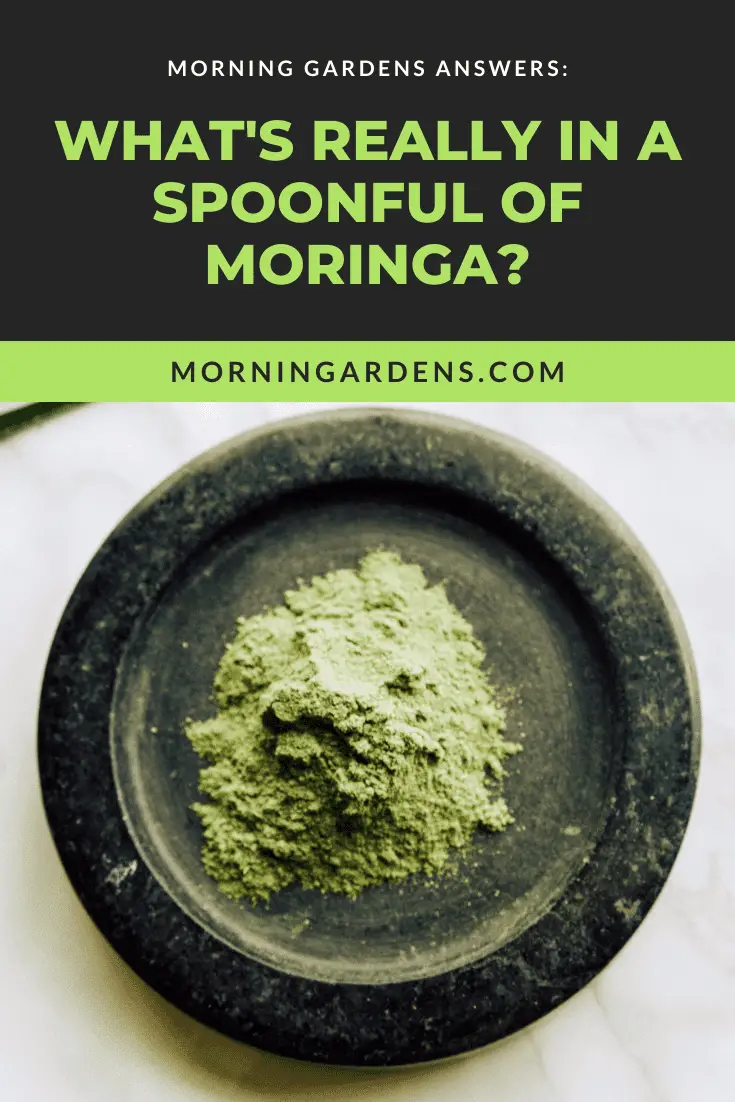
Moringa Nutrition Profile: An Overview
The nutrition information you saw above is an average from three different sources, including research studies and the USDA. The Moringa Oleifera nutrient profile is dependent upon soil, weather conditions, cutting frequency, spacing, and (perhaps most importantly) drying method. So Moringa trees grown in Nigeria are going to have slightly different nutrient profiles than those grown in India, and those grown in India are going to have slightly different profiles than those grown in your backyard. Taking an average gives us the best possible indication of what you can expect of any Moringa powder you buy, or of any Moringa leaves you powder at home. The above chart gives you nutrition information on 10 grams of Moringa leaf powder. 10 grams is the rough equivalent of 0.35 ounces or about 1.5 tablespoons. In other words, with one scoop of powder, you’re two-thirds of the way to your recommended daily Vitamin E intake. With one scoop of powder, you’re a sixth of the way done with Iron. You’ll see that 10 grams of Moringa plant will give you a sizable chunk of many of your recommended daily values of vitamins and nutrients, like Thiamin, Vitamin E, Calcium, and Iron. It won’t give you everything! If you want to supercharge your potassium intake, it’s still probably better to eat an avocado or a banana. Even so, those 10 grams of Moringa will still give you a ton of potential health benefits from the vitamins, nutrients, and anti-oxidants in the short time it takes you to sprinkle a spoonful on your breakfast. Personally, I enjoy grinding up fresh Moringa leaves, as it keeps the Moringa nutrition high and the Moringa leaves contain all the vital nutritional value. And if you don’t have a Moringa tree or want to put the effort in grinding the Moringa leaves, you can also get this Organic Moringa Powder by True Moringa which we love at Morning Gardens because it has no additives or preservatives to it!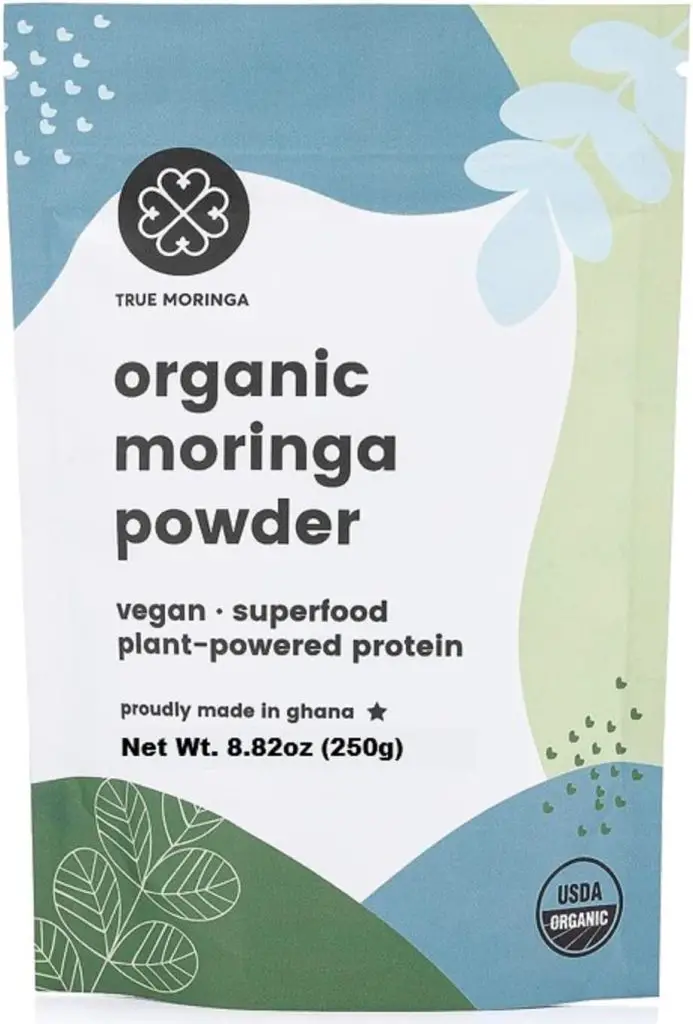 We also wrote an article that you can check out about “how much Moringa you can take each day” whether it is as a powder, capsule or the fresh Moringa leaves of the tree.
We also wrote an article that you can check out about “how much Moringa you can take each day” whether it is as a powder, capsule or the fresh Moringa leaves of the tree.
The Moringa Chart – Explained
The chart above discusses 10 grams of Moringa for two reasons:- First, 10 grams is the most commonly recommended daily serving size of Moringa in the industry, and it’s all you need for the great health benefits of Moringa.
- Second, though, is the issue of data literacy.
Moringa Nutritional Value Chart: Protein
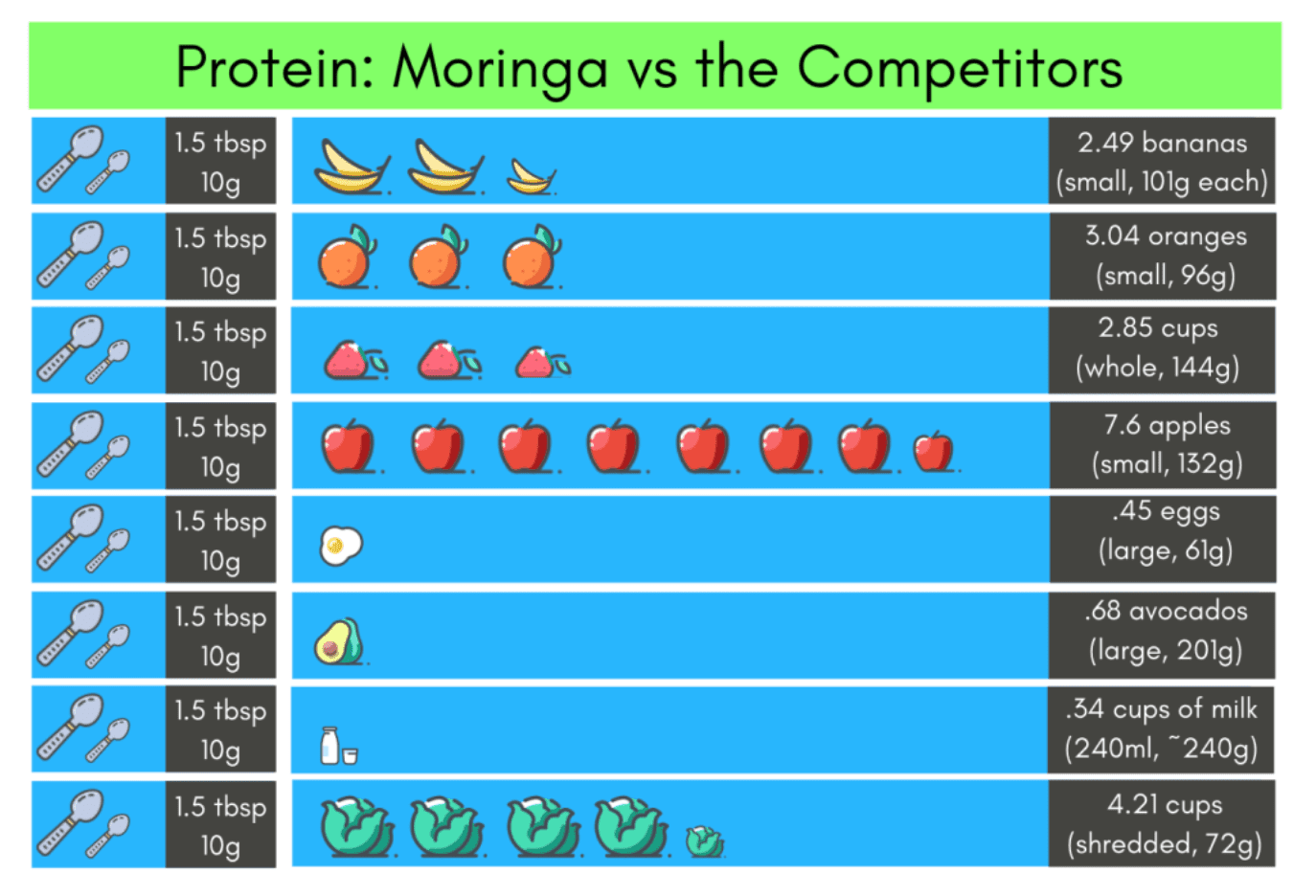
Moringa Nutritional Value Chart: Fiber
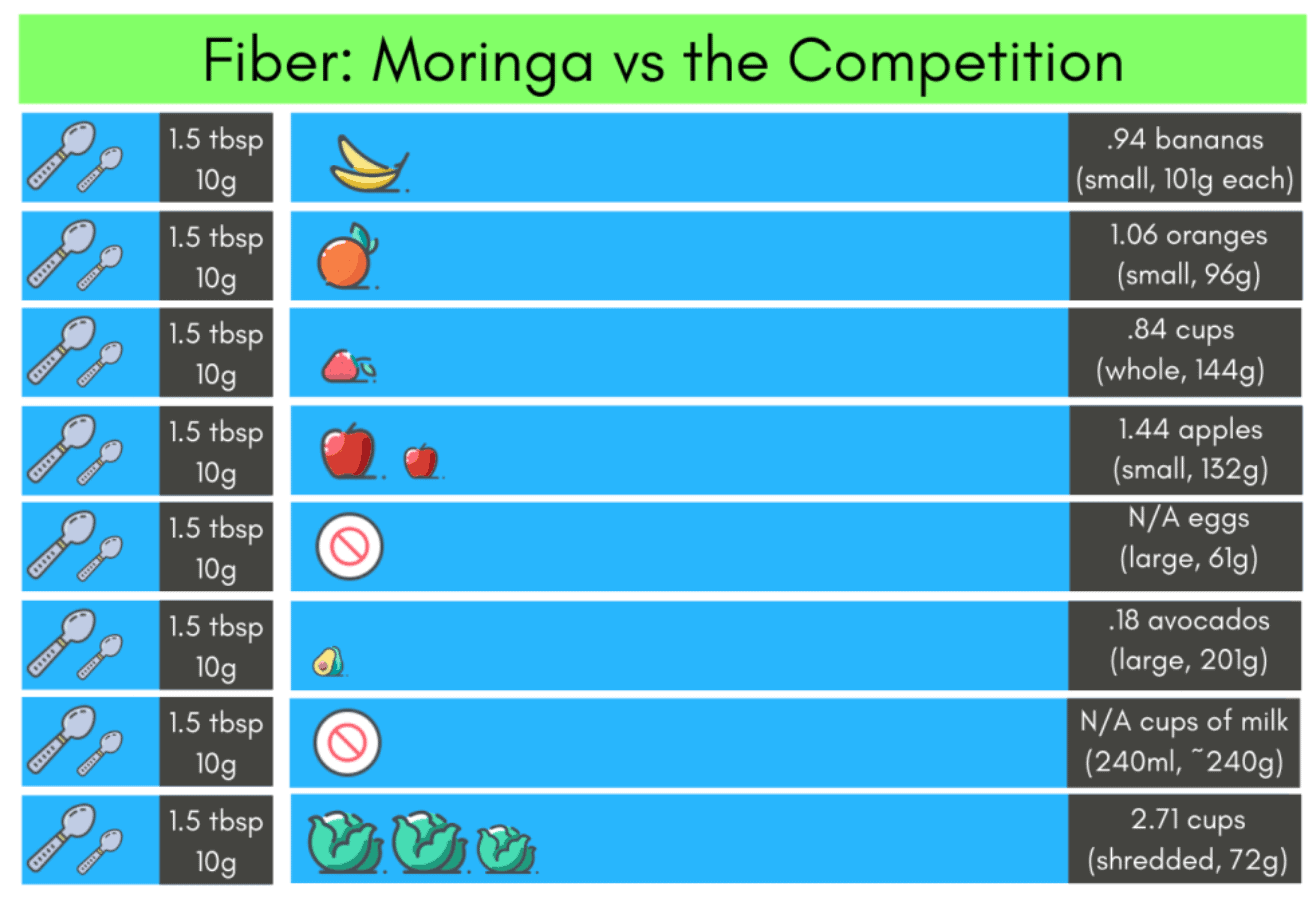
Calcium in Moringa: strengthen Bones with moringa nutrition
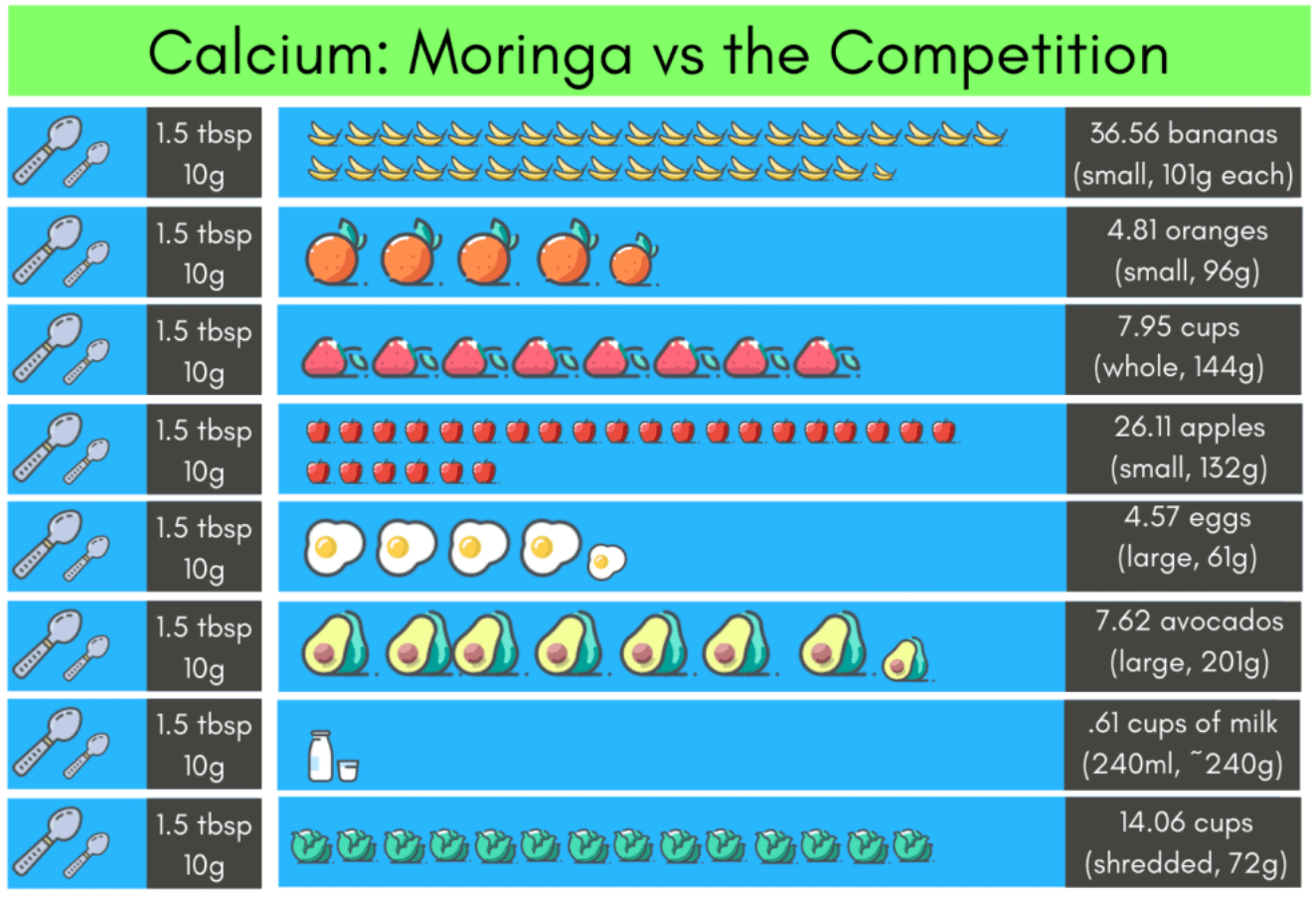
Moringa Nutritional Value Chart: Magnesium
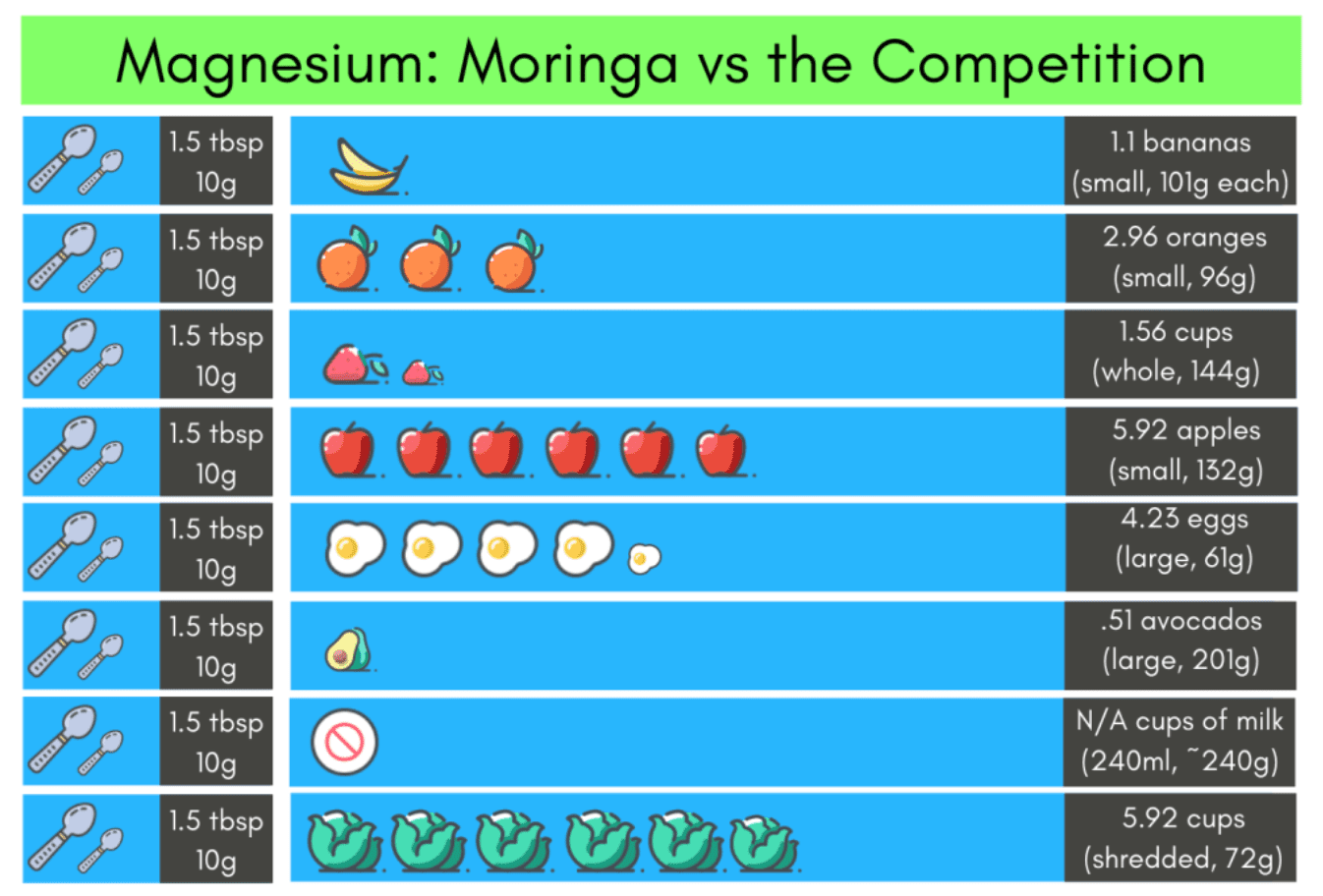
Moringa Nutritional Value Chart: Potassium
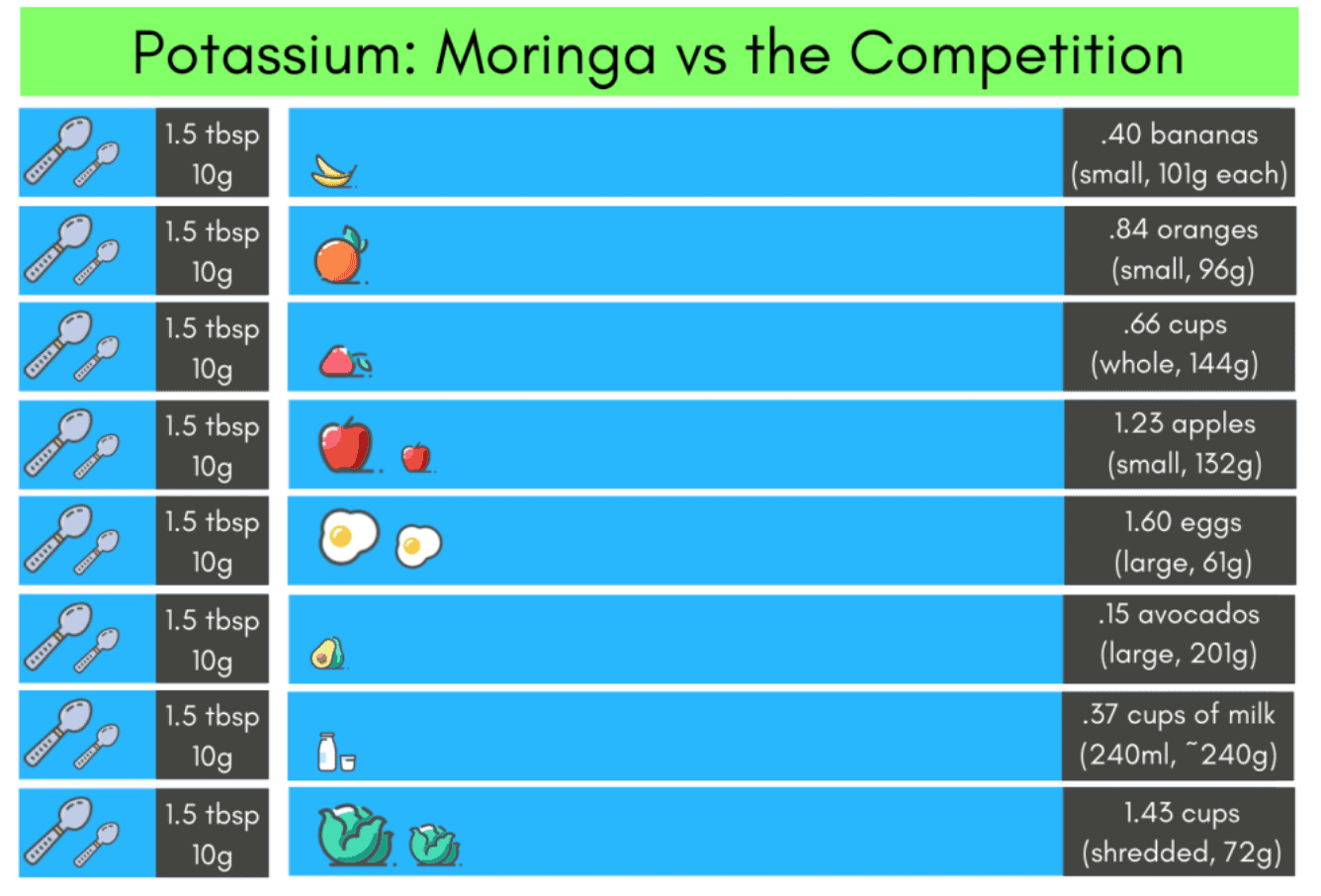
Iron in Moringa: Natural Support for energy and Vitality
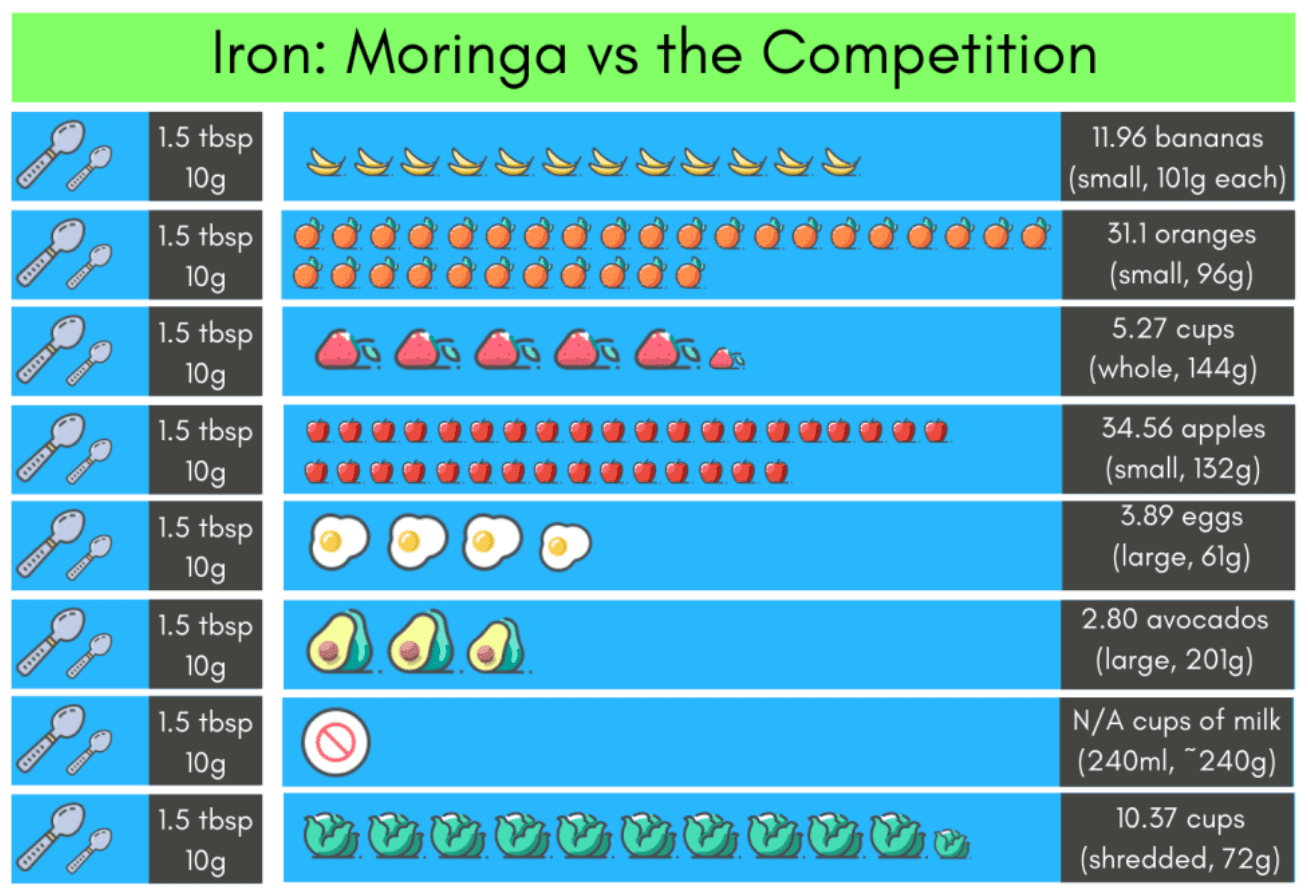
Moringa Nutritional Value Chart: Vitamin B
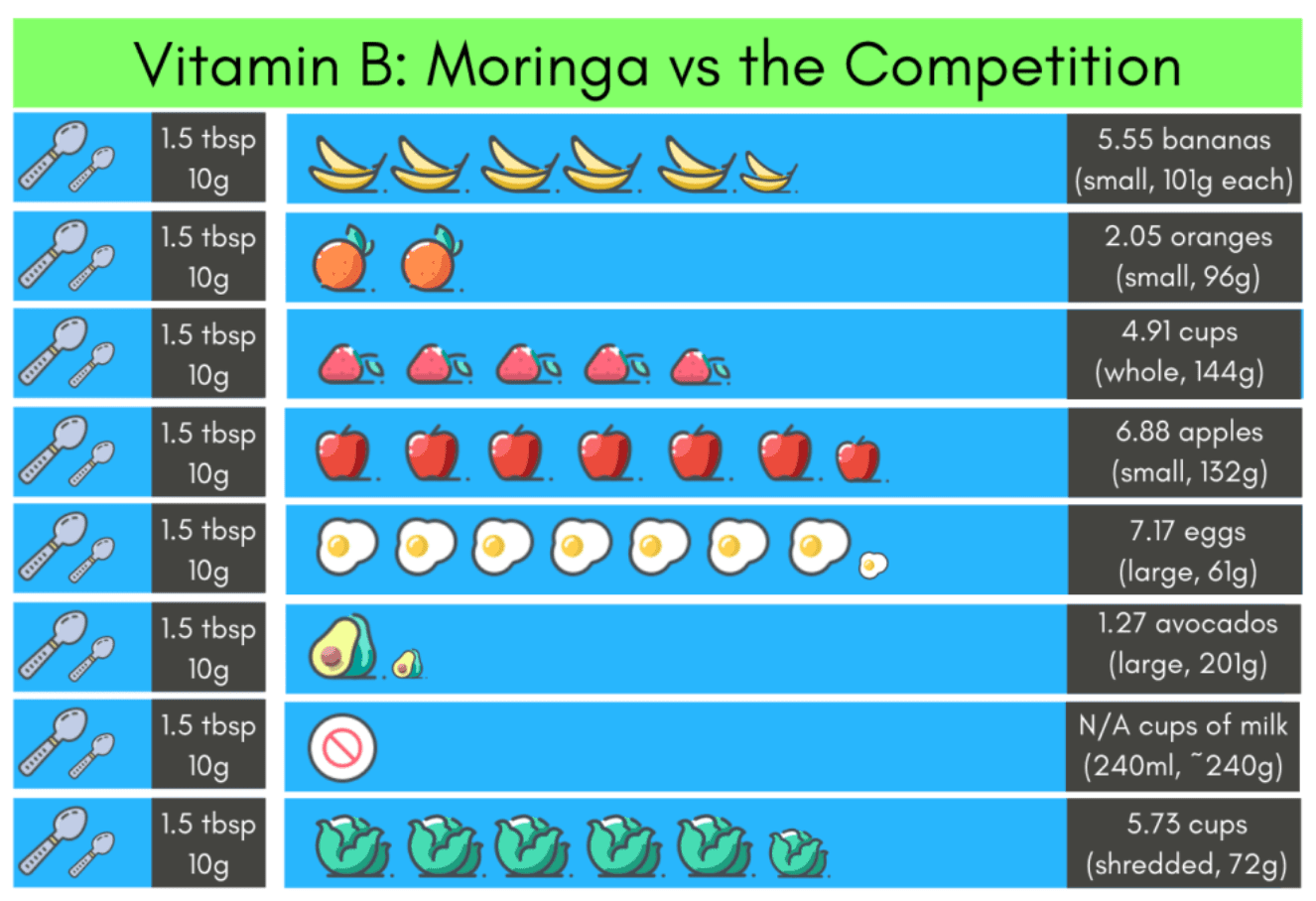
Vitamin E in Moringa: Antioxidant Powerhouse in Leaf Powder
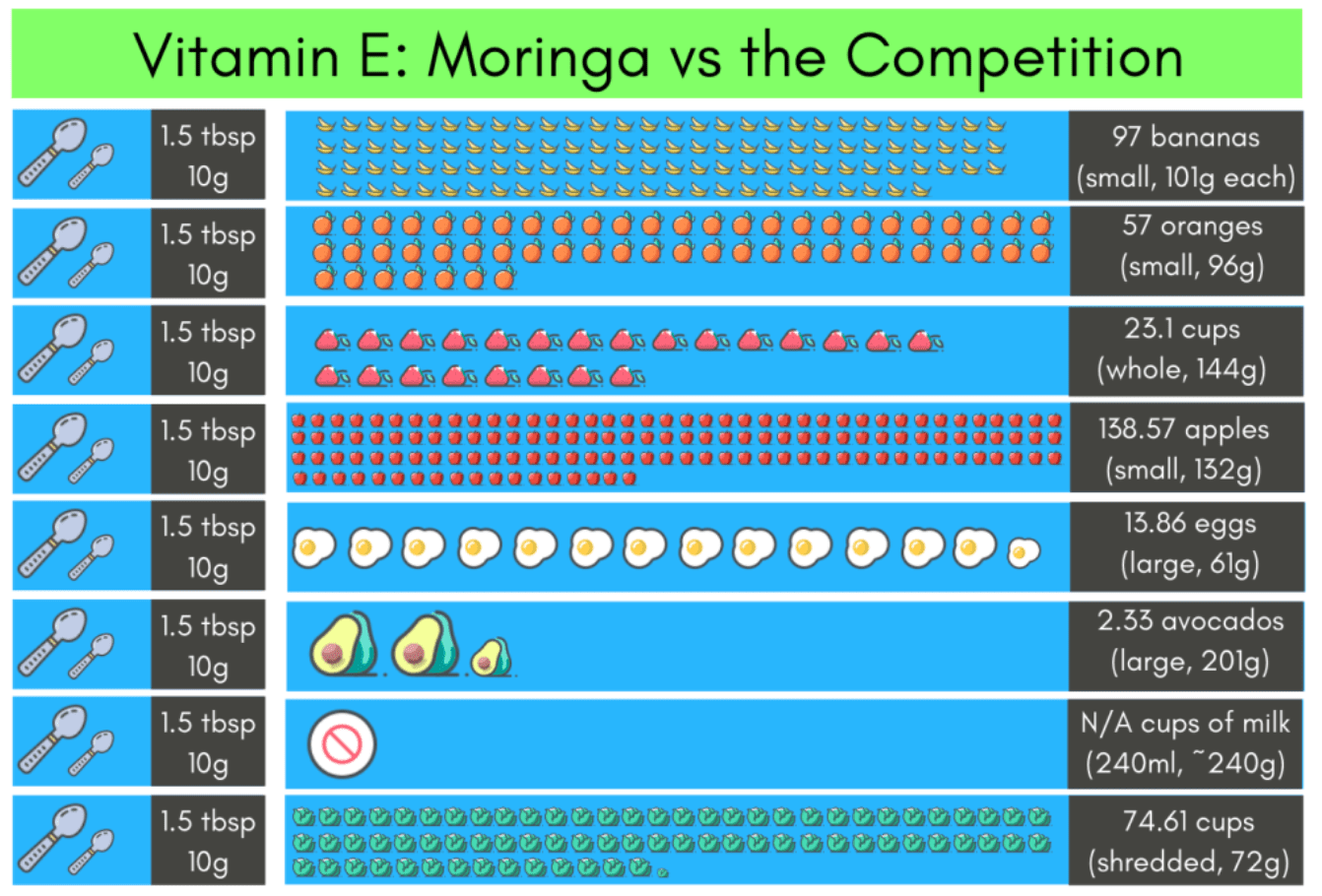
Conclusion
In summary, Moringa is not a magic bullet. Incorporating this drumstick tree into your daily routine won’t turn you into a superhero or miraculously cure all your diseases. But it does represent a simple and accessible shift away from conventional medicine that may turn into impressive results. Give it a try – our family has, and we’ve never been disappointed!
For years now, Moringa has been a daily consumption in my life, incorporated in various forms such as capsules, food recipes, and soothing teas. Initially, my daughter and I embarked on this journey as an experiment, but as time went on, I delved deeper into its remarkable potential and unearthed the unlimited benefits it offers for our well-being and health. I got motivated by how much it positively impacted me and decided to share my insights about Moringa’s profound impact on health and overall living through my blog posts.